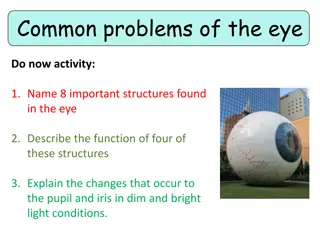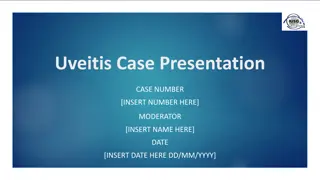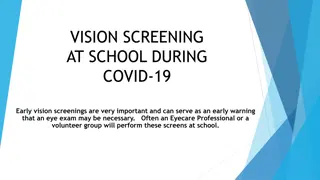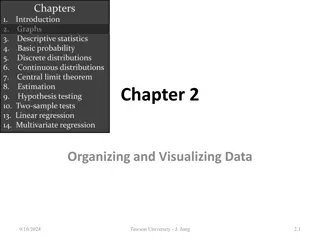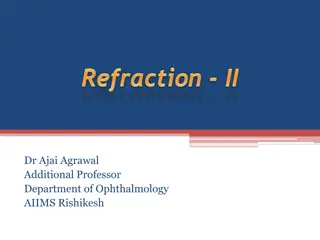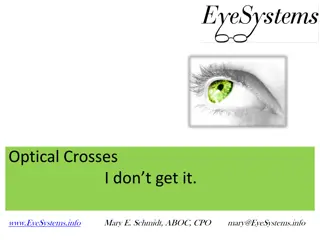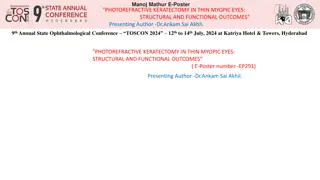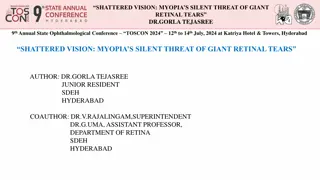Myopia - A Comprehensive Overview
Myopia, commonly known as nearsightedness, is a prevalent vision condition affecting over 1.5 billion people globally. This article delves into the history, development, symptoms, diagnosis, complications, and treatment options associated with myopia, shedding light on its impact on individuals of all ages.
Download Presentation

Please find below an Image/Link to download the presentation.
The content on the website is provided AS IS for your information and personal use only. It may not be sold, licensed, or shared on other websites without obtaining consent from the author.If you encounter any issues during the download, it is possible that the publisher has removed the file from their server.
You are allowed to download the files provided on this website for personal or commercial use, subject to the condition that they are used lawfully. All files are the property of their respective owners.
The content on the website is provided AS IS for your information and personal use only. It may not be sold, licensed, or shared on other websites without obtaining consent from the author.
E N D
Presentation Transcript
TITLE TITLE
Objectives To describe Myopia
Introduction Nearsightedness, or myopia, as it is medically termed, is a vision condition in which people can see close objects clearly, but objects farther away appear blurred. The difference between the near-sighted and far-sighted people was noted already by Aristotle. Graeco-Roman physician Galen first used the term "myopia" for near-sightedness. Johannes Kepler in his Clarification of Ophthalmic Dioptrics (1604) first demonstrated that near-sightedness was due to the incident light focusing in front of the retina. Kepler also showed that near-sightedness could be corrected by concave lenses.
Introduction Myopia is the most common eye problem and is estimated to affect 1.5 billion people (22% of the population). Rates vary significantly in different areas of the world. Rates among adults are between 15 and 49%. Rates are similar in males and females. Generally, myopia first occurs in school-age children. Because the eye continues to grow during childhood, it typically progresses until about age 20. However, myopia may also develop in adults due to visual stress or health conditions such as diabetes.
Development Heredity was an important risk factor associated with myopia, with smaller contributions from more near work, higher school achievement, and less time in sports activity. Long hours of exposure to daylight appears to be a protective factor. The most common signs and symptoms are distant objects appear blurry, close objects appear normal, headaches and eye strain. In cases of high myopia, a staphyloma can sometimes be seen on fundoscopic examination.
Development A diagnosis of myopia is typically made by an eye care professional, usually an optometrist or ophthalmologist. During a refraction, an autorefractor or retinoscope is used to give an initial objective assessment of the refractive status of each eye, then a phoropter is used to subjectively refine the patient's eyeglass prescription.
Development The most common complications are retinal detachment, cataracts and glaucoma. Among the differential diagnosis we have hyperopia, astigmatism, and presbyopia. The treatment is based on eyeglasses and contacts, refractive surgery, photorefractive keratectomy, LASIK, phakic intra-ocular lens and alternative medicine.
Development In a LASIK pre-procedure, a corneal flap is cut into the cornea and lifted to allow the excimer laser beam access to the exposed corneal tissue. After that, the excimer laser ablates the tissue according to the required correction. A number of alternative therapies have been claimed to improve myopia, including vision therapy, "behavioural optometry", various eye exercises and relaxation techniques, and the Bates method. Scientific reviews have concluded that there was "no clear scientific evidence" that eye exercises are effective in treating near- sightedness and as such they "cannot be advocated."
Development Myopia classification Low myopia Moderate myopia High myopia Children (%) 65-75 30-36 6-8 Adults (%) 15-49 12-20 4-6
Conclusions 1. Near-sightedness, also known as short-sightedness and myopia, is a condition of the eye where light focuses in front of, instead of on, the retina. 2. The underlying cause is believed to be a combination of genetic and environmental factors. 3. Near-sightedness can be corrected with eyeglasses, contact lenses, or surgery.
Exercises Write about a case of a real patient having Myopia
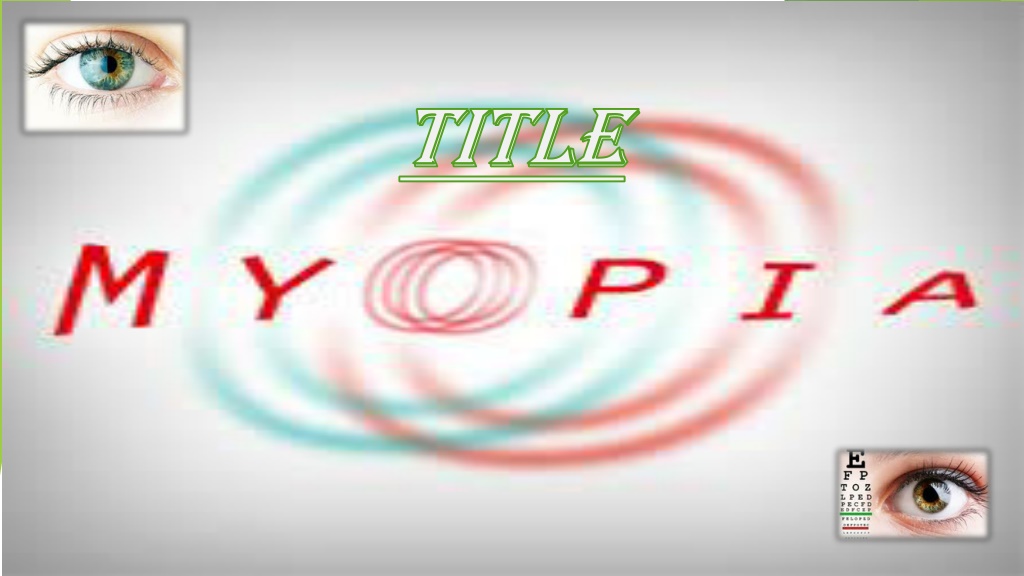
 undefined
undefined










